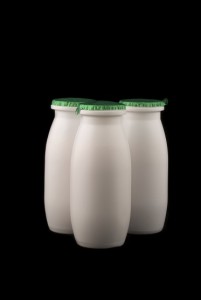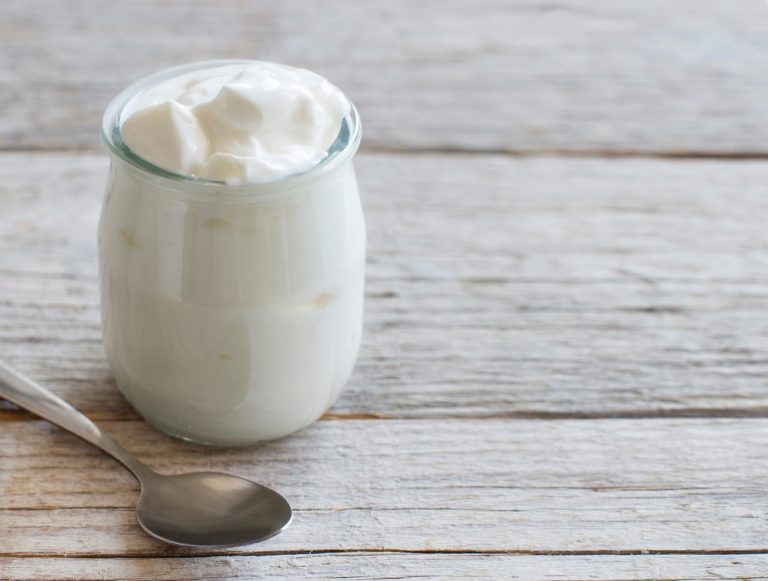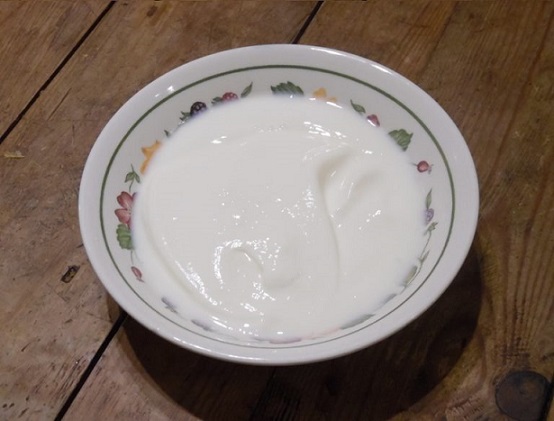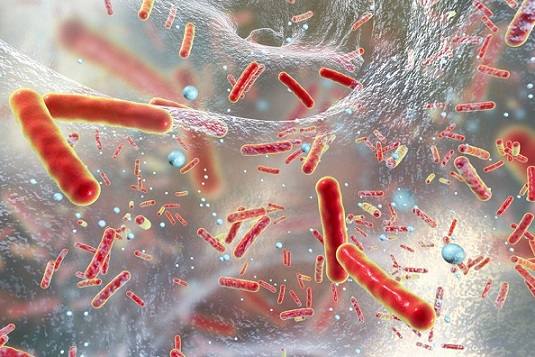 Recently, we investigated staphylococcus epidermidis, a little known bacteria which hides silently on almost all human skin.
Recently, we investigated staphylococcus epidermidis, a little known bacteria which hides silently on almost all human skin.
S. epidermidis lingered in scientists’ databanks for decades before its acne-clearing succinic acid and epidermin were finally noticed. Similarly, a more devious permanent resident is staphylococcus aureus…
…but an even more tantalising group is arguably minor bacterial strains. Bacteria with occasional, tiny colonies on human skin, but colossal cities in the gut or mouth, or even the earth. Bacteria with seemingly no motive to clear acne other than kindheartedness.
For example, unless you’re the legendary, green-skinned ghoul who haunts the soybean fields at Halloween, your face probably isn’t covered in soy sauce. Yet randomly, a soy sauce bacterial strain called bifidobacterium breve is able to increase your skin’s moisturising hyaluronic acid supplies (study).
The information is still pretty much useless, but these crazy bacteria powers are probably the most rapidly expanding area of natural acne remedies. With every new study, scientists dig themselves deeper into a tunnel of endless complexity, yet endless hidden treasure.
The future is bright for acne bacteria, and one particularly excellent recent study tested 3 lactobacilli.
The end of acne and its bacteria allies
The extended lactobacillus family has hundreds of members, each wackier than the last. This is the classic strain that makes yogurt possible, pumping out lactic acid to crank up the sourness and pull down the sugariness. Most importantly, only tiny colonies of lactobacilli are found on your face.
3 specific strains were chosen – lactobacillus rhamnosus, l. plantarum, and l. pentosus. The strains were infused in a completely neutral recipe featuring ingredients like sunflower oil and xanthan gum.
Somehow, they crafted tiny nanocapsules with the bacteria suspended in the middle, released only by rubbing into the skin. 10 participants applied the lactobacilli twice daily, all free from antibiotics or systemic retinoids (like accutane).
Through a cunning, shadowy scheme, the scientists played the bacteria off against each other. P.acnes and staphylococcus aureus put aside their differences to form one wicked acne behemoth, while the 3 forces of light marched across the battlefield of the skin, united under the lactobacilli banner. The battle raged for 8 weeks, and the scientists made 4 inspections from afar. At 0, 4 and 8 weeks, and then 10 weeks.
The longer the lactobacilli fought, particularly l.pentosis and l.plantarum, the smaller and more scattered the p.acnes army became.
2 weeks after the lactobacilli were withdrawn, their cells on the skin plummeted, while p.acnes and s.aureus recovered.
Then we have acne itself. The hypothesis: the exile of p.acnes, king of inflammation, should have banished its pimple servants too.
The result: both inflammatory acne and comedones (whiteheads, blackheads) plummeted in all 10 patients.
Inflammatory acne plunged after 4 weeks and 8 weeks, while comedones fell most sharply till 4 weeks. The pimples crept back onto the skin once the lactobacilli had returned home, proving that they were responsible.
The scientists also examined side effects, or tried to, because there were none. The lactobacilli caused neither irritation, swelling nor dryness at any of the inspections times. The skin irritation index was graded at 0.00.
The individual species – what do we know?
 Lactobacillus rhamnosus – one of best researched lactobacillus strains and most popular for probiotic pills. Alongside l. reuteri and l. plantarum, l. rhamnosus is the most abundant lactobacillus strain in the gut, with massive resistance to acid and bile, making it perfect for supplementation.
Lactobacillus rhamnosus – one of best researched lactobacillus strains and most popular for probiotic pills. Alongside l. reuteri and l. plantarum, l. rhamnosus is the most abundant lactobacillus strain in the gut, with massive resistance to acid and bile, making it perfect for supplementation.
L. rhamnosus was discovered in 1983, and is sometimes used for cheese ripening, intensifying the flavour, or simply adding probiotic power to yogurt or milk. A classic example is Parmigiano Reggiano cheese. One enemy gut bacteria it can thwart is heliobacter pylori, plague of impoverished African villages, and strongly linked to acne.
Lactobacillus plantarum – also popular as a probiotic, this strain is virtually indestructible in the gut, withstanding temperatures of 1-60C. Even antibiotics struggle to kill it.
L. plantarum has no time for deadly gut bacteria like E Coli and candida albans. Studies are avalanching in, benefiting brain inflammation and even depression. One strange power is pumping out the amino acid lysine, boosting your own dietary supplies. Compared to rhamnosus, l. plantarum is mostly used to ferment plant foods like sourdough bread, kimchi, and sauerkraut. There’s also fermented sausages, Nigerian ogi, and pickles.
Lactobacillus pentosus – abundant in fermented green Aloreña olives, originally discovered in fermented tea leaves, and common in the stomach of honeybees.
L. pentosis is rarer, and has barely moved down the prebiotic path, but scientists are very interested in it. It sticks to the intestine, wards off devilish gut bacteria, and survives in harsh conditions just as well as its brethren, even in -80C. A unique power is defending the gut against toxic heavy metals like mercury and cadmium (study).
One thing you’ll notice – almost no mention of the skin. The three strains occasionally have minor colonies, but the gut is their home turf.
More juicy study details
In almost every study participant, lactobacilli fell far from the top 5 bacterial strains in the skin. 3 older studies were also dug up, containing 463 people, and while one random person had 52% lactobacilli, only 29 people had higher than 1%. This foreignness gives lactobacilli massive potential.
Better yet, bacterial cells were extracted from the skin and analysed in a petri dish, and confirmed to be happy and thriving.
The lactobacilli multiplied and multiplied, from tiny colonies in week 0, to week 4 when 7 out of 10 patients had high quantities. By week 8, 8 out of 10 did, proving that they didn’t vaporise instantly on touchdown. The three strains persisted in near identical numbers.
Meanwhile, staphylococcus aureus was enhanced in all acne patients, reiterating its recently discovered nastiness, whereas their lactobacillus salivarius colonies were unusually absent. This strain lives in – guess what – your mouth, dispatching two natural antibiotics called salivaricin A2 and salivaricin B which erase the tooth-nibbling S. pyogenes.
The coolest result though, was easily the complete suppression of p.acnes’ lipases. These enzymes digest fat, like pizza in your stomach, but p.acnes produces its own version called glycerol-ester hydrolase A, digesting sebum into inflammatory products, like a factory taking harmless wood and churning out toxic smog which blackens the land. In fact, the deadliest p.acnes substrains, family 1a, are proven to produce more lipases.
Despite being stranded in hostile territory, the 3 lactobacillus strains look extremely promising for acne.
But why?
 The scientists could only shrug their shoulders, but the main candidate is easily the character behind yoghurt’s classically sour taste.
The scientists could only shrug their shoulders, but the main candidate is easily the character behind yoghurt’s classically sour taste.
It’s a substance closely related to salicylic acid and glycolic acid, popular exfoliation creams used for antiageing. It’s much milder than both of them, due to its small natural presence in human skin, produced by sweat glands.
The substance is of course lactic acid, chief byproduct of lactobacilli’s glucose, fructose or maltose fermentation. Lactic acid’s antibacterial properties are confirmed, warming up by infiltrating your skin pores and lowering the PH, creating inhospitable conditions for p.acnes.
Not even artificially increasing the pH to 7.4 can stop it. Salmonella enteritidis cells have been observed under a microscope to leak uncontrollably just 6 hours after exposure, shrinking in size and collapsing into massive gaps and pits.
The scientists confirmed that pentosus, rhamnosus and plantarum pumped out plenty of lactic acid after migrating to their new home. Even better is the handful of studies directly on acne:
STUDY ONE: 16 patients applied 5% lactic acid to their face twice daily, and after 12 weeks, inflammatory acne and whiteheads fell by 61.1 % and 44.0% respectively.
3 experienced “poor” results, but 10 experienced “moderate” and 3 “excellent”. Lactic acid almost matched a 2% lotion of the antibiotic erythromycin, which achieved 66.4% and 62.2%.
STUDY TWO: this Indian study had the slight flaw of a 1 month course of antibiotics whenever their acne intensified. However, over 1 long year, patients rubbed lactic acid cream into their face twice daily.
40.9% of the patients enjoyed 90-100% reductions in inflammatory acne, while the rest boasted 50-90%. Another interesting acne point: their acne was particularly severe during the hot and rainy season.
Speculation – hidden acne-clearing powers
What we don’t know is whether lactic acid was the sole mastermind, or whether weirder bacterial powers were involved.
Lactobacillus feed off sugars for their energy, particularly glucose, while p.acnes ferments sebum. Their diets seem completely distinct, but what if the strains share a more minor food source, which lactobacilli can snatch away?
Similarly, consider s. epidermidis, which ferments the natural moisturiser glycerol and pumps out acne-clearing succinic acid. Pentosus and rhamnosus ferment glycerol as a side dish themselves, whereas plantarum cannot, but the real point is the possibilities.
The lactobacilli could ferment ammonia in sweat (like nitrosomonas eutropha), degraded collagen, or vitamin C, creating who knows what substances. What if lactobacilli also ferments sebum, but produces unique antibacterial metabolites, the stuff of p.acnes’ nightmares?
Meanwhile, in the gut, lactobacillus rhamnosus can block the binding of s. aureus to intestinal cells by 44%. Lactobacillus crispatus pumps out a “moonlighting protein” called enolin which shields intestinal binding sites, while lactobacillus plantarum has a binding-enhancing molecule called triosephosphate isomerase.
Whose to say that lactobacilli can’t kick p.acnes out of its binding sites in the skin? A classic example is toll-like receptor 2, which cranks up inflammation.
Another possibility is bacteriocins, their own antibiotics, both discovered and undiscovered. P.acnes, for example, creates the imaginatively named acnecin, which attacks friendlier, well-meaning strains of p.acnes. L. plantarum creates lactolin, while very recently, it was discovered that l. pentosus manufactures pentolin JL-1, which weakens, warps and shrinks the cell surface of s. aureus.
Bacteria may be only one piece of the puzzle, particularly given the massive 60% reduction. Maybe lactobacilli binds to TLR2 sites and downregulates them, or maybe its fermentation byproducts have antioxidant properties. The possibilities are endless.
How the lactobacilli could trip up
 Nevertheless, there’s still a gaping flaw holding us back from declaring the three strains to be the future.
Nevertheless, there’s still a gaping flaw holding us back from declaring the three strains to be the future.
The problem that every improvement, scraped out inch by inch, vanished completely within two weeks.
It sounds okay – why would the benefit linger, when aloe vera’s and honey’s certainly don’t? But this is a bacteria, a living microorganism. The goal, just like with yogurt, is to make the bacteria go native and establish a constant acne-clearing colony.
Firstly then, the 3 lactobacilli strains come from the gut, and its pH preference, defensive molecules and energy sources are all adapted to survival there. The skin could be hostile territory unless a topical treatment constantly replenishes them.
You could argue that if tested for one year, the lactobacilli strains could have suppressed p.acnes for good. However, with the endless strains of p.acnes, there’s bound to be a few with natural resistance to lactobacilli. What if these expand in response, co-operating and handing each other the best genes? Some bacteria are known for “horizontal gene transfer”, where they bind to foreign DNA and absorb it.
Alternatively, because p.acnes lives in the skin and not the gut, it could be completely non-resistant to lactobacilli, taken off guard.
But the reverse could be true. Lactobacilli could ride into a volley of arrows, bacteriocins and peptides and fall instantly, with no resistance, like an alien invasion arriving on Earth and dying within hours from the common cold.
It’s even possible that staggering out of their dark den, lactobacillus strains lack resistance to sunlight. Consider blue light devices, specifically designed to suppress p.acnes. There’s clearly some resistance if acne patients can stroll freely through a sunny park at 12pm, but lactobacilli could be dramatically weaker.
Lactobacilli could even have a shady side, assassinating other protective strains of skin bacteria. Right now, your skin may have small colonies, struggling to survive on an inhospitable alien planet, but higher quantities could tip them over the edge.
Speaking of which, that was the main methodological flaw; the staphylococcus had no differentiation between vicious aureus and kindly epidermidis.
Then there’s moisturising, wrinkles, glow, waking up and looking like an anteater. Vast buckets of lactobacilli are not indigenous to the skin. Alternatively, by that logic, p.acnes should be 100% cute and cuddly, but we all known how that turned out.
The key takeaway is that research is young. The world of bacteria has endless nooks and crannies. Your average bacteria has 100 different compounds and 100 neighbouring strains it can interact with.
The verdict
Overall though, the facts are right in front of us. The three lactobacillus strains washed away p.acnes and s. aureus, the two deadliest acne bacteria, and magically cleared acne in just 4 weeks.
Sure, the bacteria need constant renewal, but it might not matter. If we have a harmless natural bacteria that makes pharmaceutical antibiotics a thing of the past, then daily application is a small price to pay. Topical treatments are not true cures for acne anyway, just excellent bonus weapons. Lactobacilli could happily sit alongside honey and aloe vera beneath the throne of diet and nutrition.
Fatal flaws may be unearthed, but with all the obscure bacteria being tested, there’s bound to be one which is truly revolutionary for acne, twenty years down the line.
This study adds yet more promise to the ever expanding world of acne bacteria.
Thanks for reading!